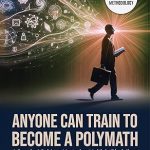For many of us, the question “why can’t I get out of my comfort zone” strikes a deep chord. Everything feels safe, predictable, and stress-free while we are in our comfort zone. Although it offers a sense of stability, remaining there for an extended period of time can impede personal development and keep you from …
Continue reading “Why Can’t I Get Out Of My Comfort Zone: Create Your Best Year Yet”











